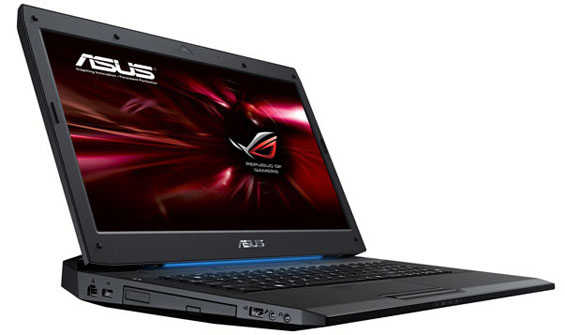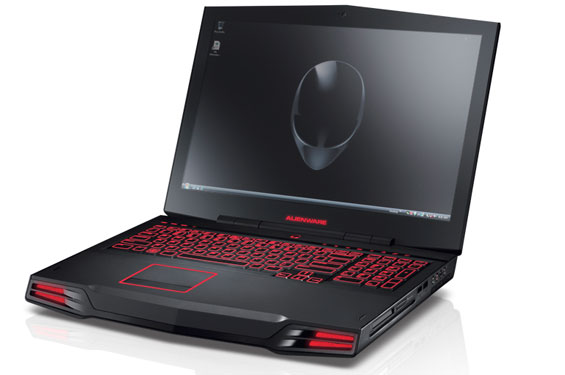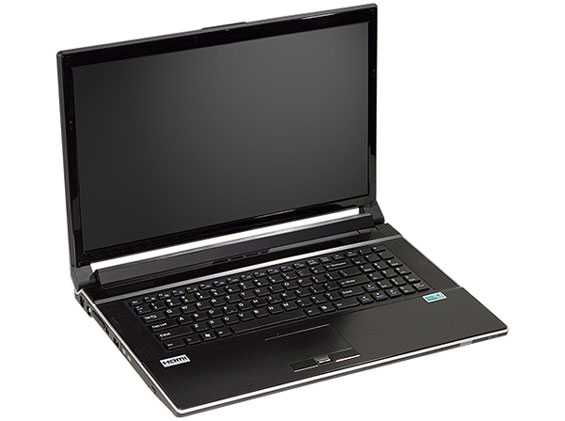Mobile Buyers' Guide: 14" and Larger Notebooks and DTRs
by Dustin Sklavos on June 30, 2010 12:53 AM ESTFull-On Gaming Machine: ASUS G73Jh
Our final recommendation in this roundup is for the best gaming machine you can get while still paying at least a sensible amount of money, and that machine is the ASUS G73Jh. We gave it our Editor's Choice award in our review, and it's pretty easy to see why.

For a second, let's ignore the meaty hardware built into the chassis and just appreciate the subtler, solid build of the G73. The stealth-bomber-inspired design seems unusual at first, but the notebook is virtually devoid of gloss, and is vastly more attractive than its predecessors. The old ASUS Republic of Gamers-branded notebooks were great in their own right, but the build of the G73 seals the deal.
Or is it the fact that our review machine came with a Core i7-720QM, 8GB of DDR3 (in four slots!), two 500GB 7200-RPM hard drives, a 2.1 speaker system with built-in subwoofer, and one of the fastest mobile GPUs on the market, the Mobility Radeon HD 5870? Stack all that with a high-contrast 1080p screen and a remarkably low $1505 price tag and you have both a bargain and a fantastic piece of hardware. If that price isn't low enough, ASUS sells a cut-down G73Jh-RBBX05 model at Best Buy that drops the screen resolution down to 1600x900, drops 2GB of RAM and one of the hard drives, but keeps the Mobility Radeon HD 5870 and Core i7-720QM...for $1199. Good luck even finding another machine sporting hardware that powerful for that price.
The ASUS G73 is big, powerful, quiet, and priced aggressively by a company hungry for market share, and it's our pick for the best full-on gaming machine you can buy without breaking the bank.
Gaming Notebook Runners Up: Alienware M17x and Clevo W880CU

If you're looking for alternatives, you can pick up laptops with Radeon HD 5870 CrossFire for around $2500 (with a few upgrades). Eurocom has a customized version of the Clevo X8100 with 5870 CrossFire (or you can get it with GTX 285M SLI), but the Alienware M17x looks better and packs some compelling features. Topping the list of nice extras is the WUXGA RGB LED display, a $200 upgrade that's worth every penny in our book. While we have little doubt the NVIDIA GTX 480M is going to be a faster GPU than the HD 5870, there aren't any SLI notebooks with 480M yet—and that's going to be difficult to manage, considering each GPU can draw 100 watts!

But there are advantages to single GPUs, like not having to worry about CrossFire/SLI profiles for your favorite game to come out. If you want GTX 480M, you can pick up the Clevo W880CU. One of the first companies to start shipping these bad boys is AVADirect, but it's not going to come cheap. If you must have the absolute fastest, most ridiculous piece of gaming kit, the W880CU aims to satisfy, available with the scorching 100-watt TDP GeForce GTX 480M. Given the lackluster lead the Mobility Radeon HD 5870 had on the GeForce GTX 285M, it's easy to expect the 480M to claim the crown of fastest mobile GPU available. You'll pay a pretty penny for it and the cooling required is going to be decidedly bulky, but if you must have the fastest, Clevo's W880CU will deliver. We're not sold on the design of the W880CU and we'll have a review in the near future, but the 480M is the fastest current single-GPU mobile solution.










63 Comments
View All Comments
Dustin Sklavos - Wednesday, June 30, 2010 - link
If you're willing to spend up that much, Sony's 13.1" Z series can be upgraded to a 1080p screen. :)bji - Thursday, July 1, 2010 - link
Thank you for that information. I was unaware of that model and it looks very interesting. The only drawbacks are the glossy screen and the non-fanless CPU. But it's definitely got the weight and the pixel count going for it. I wish it were 14 inches ...hko45 - Wednesday, June 30, 2010 - link
The Dell Studio 17 might be okay, but for a DTR graphics WS, I'd take the Precision M6500 any day. Besides having the i7-920XM, up to 16 GB of RAM, USB-3, Nvidia Quadro FX 3800M card, and WUXGA RGBLED, you can also use the available E-Port Plus docking station when you're at home base with its 2 DVI and 2 DP ports for multiple displays.JarredWalton - Wednesday, June 30, 2010 - link
The Precision M6500 is a huge step up in price, mostly because you have to go with higher end options. I would agree build quality is better, but for many multimedia people the Quadro cards aren't necessary. You can get the RGB LED 1080p on the Studio 17 with 720QM for ~$1300 with a 3-year warranty. The cheapest quad-core M6500 is going to run upwards of $2500. Worth it for some? Definitely. But you want to make sure you really need those upgraded components.hko45 - Wednesday, June 30, 2010 - link
The real selling point for me is the availability of the E-Port Plus docking station for the Precision lineup. While I may be willing to make-do while on the road, coming home to two calibrated monitors to do my main PhotoShop post processing is the deal maker. I do my "dream" shopping on the main Dell site to see what configuration options are available, and then I keep checking on the Outlet page until something acceptable comes up.Incidentally, another reason to go with the Precision (or Vostro or Latitude) is ProSupport, which I don't think you can get on Dell's consumer side. Give me real English-speaking NA support any day.
hko45 - Wednesday, June 30, 2010 - link
Jared,I forgot to comment on your Quadro remark. Ever since CS4 (CS5 now), PhotoShop takes full advantage of the (Nvidia) GPU. Apparently Adobe worked quite closely with Nvidia so any on my WS configs will only use Quadro boards.
JarredWalton - Wednesday, June 30, 2010 - link
True... CS5 is CUDA accelerated while CS4 was OpenGL. I haven't done testing enough to say how much difference a fast GPU makes in Photoshop, likely because I just don't do enough complex editing. I also don't know if Quadro makes a difference relative to regular GeForce. Anyway, the M6500 is a good workstation with an awesome RGB LED display, but it's expensive. If you want the extras, though, I have no complaints with it.Dustin Sklavos - Wednesday, June 30, 2010 - link
It honestly doesn't, really, at least in my experience. It's also my understanding Photoshop CS5 is still just OpenGL accelerated (a run through the settings didn't have anything CUDA on it, just OpenGL which is improved further still here); Premiere and After Effects have some CUDA acceleration, but those two are my babies, and the CUDA-accelerated processes are fairly specialized. I use a Radeon HD 5870 in my main workstation, and not having CUDA functionality isn't keeping me up at night.The primary use for workstation-class graphics is still going to be Maya and similar software.
hko45 - Thursday, July 1, 2010 - link
I turned off the use-GPU setting in PhotoShop just to see whether I'd notice the difference. Big difference. It also doesn't hurt that it's able to take advantage of all the RAM you can throw at--the case for 64-bit OS (and the M6500 can give you 16 GBs). Don't you get tired of water twirly things marking the passage of time?Again, I especially like the Precision Mobile WS because it can use the E-Port Plus which has the two DVI and two DP ports for my dual monitors. Admittedly, biggest bang for the GPU capability comes with the Mercury engine in video processing (and who's to say that I won't get more serious with video). However, I've seen enough of what Adobe has done with PhotoShop's ability to use the GPU to bet on the direction its going in its close relationship with Nvidia.
I don't know about you, but I'd prefer to buy a mobile WS that won't get too outdated within three years.
Dustin Sklavos - Thursday, July 1, 2010 - link
Yeah, but remember, in Photoshop it's just OpenGL and largely dependent on available video memory. No Nvidia secret sauce there.We have a GTX 480M notebook getting reviewed right now, I'll check to see just how big of a difference the Mercury Playback Engine might have (if it can be enabled on the 480M at all), but I can tell you I don't feel like I'm missing anything using Premiere on my Radeon, and Premiere IS my bread and butter.